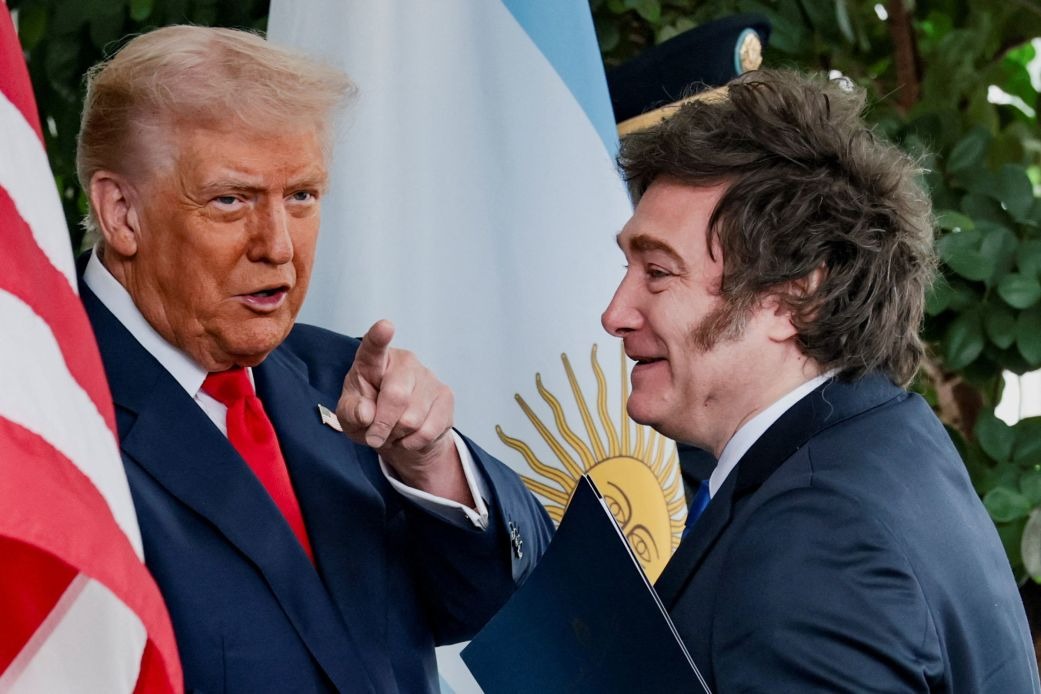
President Donald Trump’s $20 billion bailout of Argentina’s economy has raised red flags in the U.S., especially among American farmers desperate for help dealing with a crop crisis triggered by his trade war with China.
Argentina’s President Javier Milei met with Trump and top U.S. officials, including Treasury Secretary Scott Bessent, Tuesday at the White House.
The meeting came nearly a week after Bessent announced a $20 billion financial lifeline that included a currency swap framework with Argentina’s central bank aimed at propping up the Argentine peso.
“We just want to see Argentina do well,” Trump told reporters during the meeting.
In an X post last week, Bessent said the U.S. finalized a $20 billion swap line, or a loan, with Argentina’s central bank, where the U.S. Treasury will exchange dollars for pesos.
The expectation, Bessent has said, is that those dollars will eventually be paid back.
Bessent also said last week the U.S. directly purchased pesos, without specifying how much.
The Treasury Department had not published any details about the terms of the swap agreement as of Tuesday and ultimately the dollars it’s offering to Argentina’s central bank are U.S. taxpayer dollars.
“You can call it a bailout, you can call it a rescue, it is a credit line to a country that otherwise would be out of reserves,” Brad Setser, a senior fellow at the Council on Foreign Relations and former Treasury official, told ABC News.
Bessent has repeatedly denied that the deal is a bailout, saying the U.S. is supporting the economic reforms of a key South American ally and advancing U.S. strategic interests in the region.